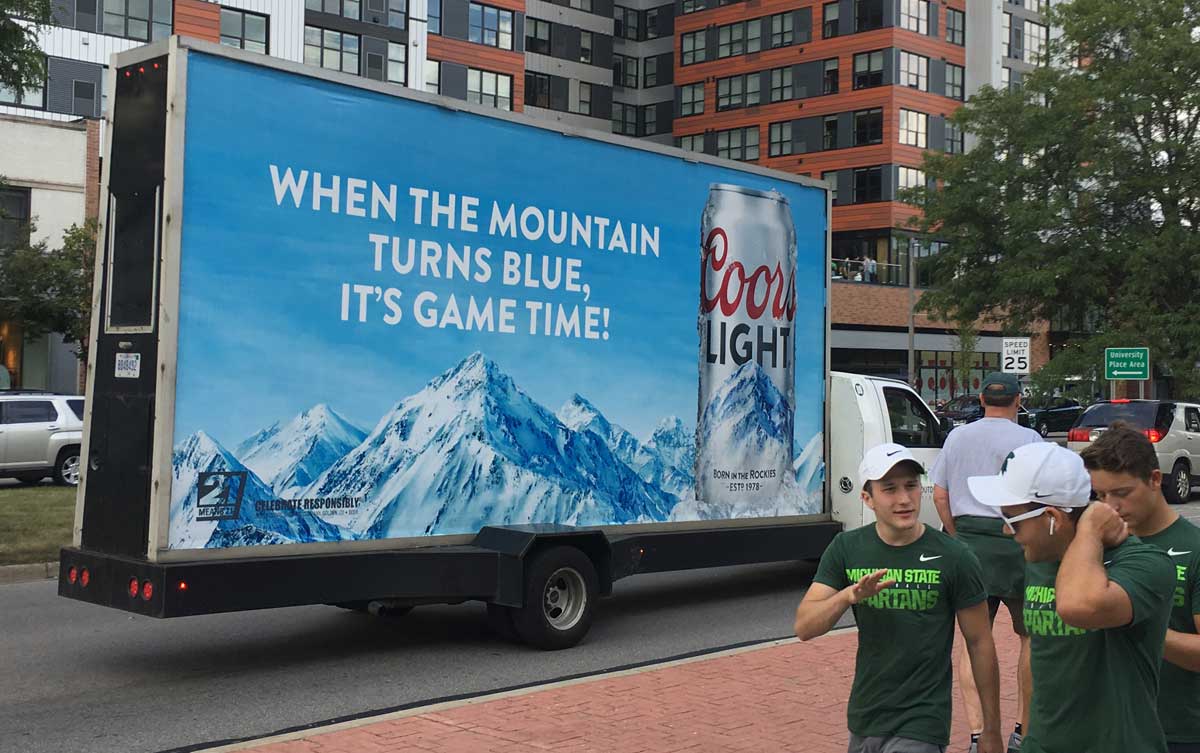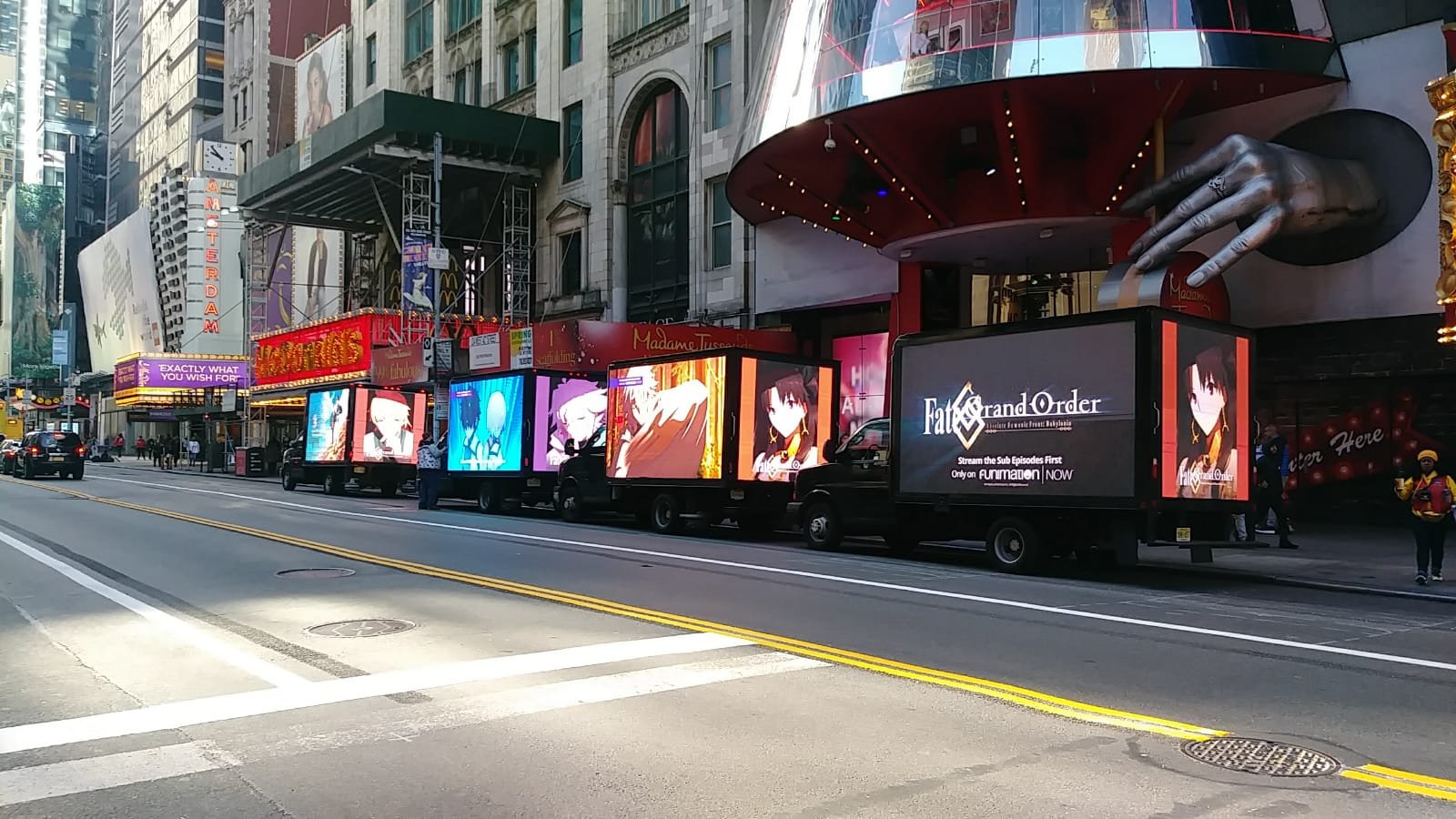Mobile Billboard Advertising: Benefits, Strategies, and Examples

The advertising industry has been redefining its techniques and methods of communicating with the target audience, with mobile billboards playing a significant role in this shift. These movable billboards, whether traditional or digital, offer a flexible, dynamic, and impactful way to reach potential customers.
Benefits of Using Mobile Billboards for Advertising
Mobile billboards have revolutionized the advertising game, offering the ability to deliver messages directly to consumers. They have a high recall rate and are especially effective for local advertising, driving impact wherever they go.
Unlike stationary billboards or digital ads that rely on consumers to notice them, mobile billboards proactively reach out to consumers, capturing attention as they navigate through cities, suburbs, and even rural areas. They literally take the message to the streets, directly engaging consumers in their daily environments.
Mobile billboards also boast a high recall rate. According to numerous studies, mobile advertising generates a higher recall rate compared to traditional types of advertising. This is primarily due to their movement and size – people tend to remember something big and on the move far better than something small and stationary.
They can navigate targeted neighborhoods or districts, allowing for pinpoint advertising that resonates with the local population. This is especially useful for businesses such as restaurants, retail stores, or local services that rely heavily on local clientele.
In a world where consumers are increasingly desensitized to advertising, mobile billboards offer a fresh, attention-grabbing approach that’s hard to ignore.
Types of Mobile Billboards
Traditional Mobile Billboards
Description and Features
Traditional mobile billboards are physical banners or boards, usually towed by trucks or mounted on dedicated vehicles. These vehicles are programmed to travel around predetermined routes, exposing the advertisement to various locales. The design of the billboard often showcases static images or messages to the audience, and they are custom-designed according to the brand’s needs. They bring the brand’s message directly to consumers, moving through city streets, residential areas, highways, and anywhere else the audience may be found.
Advantages and Limitations
Traditional mobile billboards offer several advantages. They provide wide exposure, especially in high-traffic areas. By constantly moving through these areas, the advertisement’s reach is multiplied, enhancing visibility and maximizing impact. In addition, traditional mobile billboards are incredibly effective at capturing local attention. Businesses can strategically plan the routes of these mobile billboards to target specific neighborhoods or demographics. This can be especially useful for localized advertising campaigns, such as store openings, local events, or promotions. However, traditional mobile billboards do have certain limitations. The primary one is the lack of real-time adaptability. Another potential drawback is that traditional mobile billboards may not be as engaging as their digital counterparts.
Digital Mobile Billboards
Definition and Characteristics
Digital mobile billboards represent the next step in outdoor advertising. They utilize high-resolution LED screens to showcase vibrant, dynamic content that can range from static images to full-motion video. They are capable of changing displays based on location, time, or even weather conditions, thus enhancing the personalization and relevance of the advertisements displayed.
Benefits and Opportunities Offered by Digital Billboards
Digital billboards provide opportunities for advertisers to get creative with their content. They can schedule different ads at different times, use motion graphics, and even adapt to real-time data.
Advantages of Mobile Billboards Advertising
Targeted Advertising to Specific Locations and Demographics
Mobile advertising billboards allow advertisers to target specific locations and demographics effectively. They can navigate to areas where their target audience is located and display their ads at the most impactful times.
Flexibility and Mobility in Reaching a Wider Audience
The mobility of mobile digital billboards offers flexibility. They can be moved to different locations based on market needs and events, giving advertisers a chance to reach a wider audience.
High Visibility and Impact on the Go
Due to their physical presence, mobile billboards naturally draw attention, ensuring high visibility. Plus, they can follow crowds, enhancing their overall impact.
Cost-Effectiveness Compared to Traditional Advertising Mediums
Despite their high impact, mobile billboards can be surprisingly cost-effective. Costs are controlled by selecting specific routes, durations, and times, which can’t be done with most traditional advertising mediums.
Effective Strategies for Mobile Billboards Advertising
Identifying Target Audience and Locations
Effective use of mobile billboards starts with identifying the right audience and choosing the best locations to reach them.
Designing Captivating Visuals and Messages
The effectiveness of mobile billboard advertising heavily relies on compelling visuals and persuasive messages.
Utilizing Strategic Routes and Timing for Maximum Exposure
Choosing the right routes and timing can ensure the ads reach the right people at the right time, improving the campaign’s success.
Measuring and Analyzing Campaign Performance
Through digital mobile billboards and data analytics, advertisers can measure the performance of their campaigns and make necessary adjustments.
Case Studies of Successful Mobile Billboard Advertising
McDonald’s “Big Mac” Mobile Billboard Campaign
McDonald’s ran an innovative and highly successful mobile billboard advertising campaign to promote their iconic Big Mac. Understanding the importance of location in advertising, the fast-food giant placed billboards on trucks and strategically routed them through areas with high traffic volumes, such as city centers and busy highways. The mobile billboards showcased tempting images of the Big Mac, cleverly paired with catchy slogans. This initiative resulted in a noticeable increase in restaurant foot traffic and Big Mac sales, reinforcing the effectiveness of mobile billboard advertising in reaching a broad audience and driving brand exposure.
Nike’s Mobile Billboard Campaign During Major Sporting Events
Nike, a global sports brand, leveraged the power of mobile billboards during major sporting events, such as marathons and football tournaments. They placed digital mobile billboards on vehicles, displaying motivating messages and showcasing their latest sports gear. The mobility of the billboards allowed Nike to follow the crowd and remain visible throughout the events. This resulted in Nike’s brand continuously being in the spectators’ line of sight, attracting the attention of thousands of sports fans. The strategic placement and timing significantly boosted Nike’s brand visibility, demonstrating how mobile billboard advertising can create substantial advertising impact when aligned with events attended by the target demographic.
Coca-Cola’s Mobile Billboard Campaign Targeting College Campuses
Coca-Cola, known for its creative advertising campaigns, used mobile billboards to target the young demographic prevalent on college campuses. They designed vibrant digital mobile billboards that were relatable and engaging to students. The billboards, mounted on trucks, toured various campuses during peak times, such as enrollment periods, campus festivals, and sporting events. Coca-Cola tailored their messages and visuals to resonate with the youth, with ads showcasing friends enjoying their products or promoting campus-specific deals. This campaign resulted in a high level of student engagement and boosted brand presence within the targeted demographic, underlining the power of mobile billboard advertising in reaching specific audience segments.
Future Trends and Innovations in Mobile Billboard Advertising
Integration with Location-Based Technology and Data Analytics
The future of mobile billboards lies in integrating location-based technology and data analytics to provide more targeted and efficient advertising.
Augmented Reality (AR) and Virtual Reality (VR) Experiences on Mobile Billboards
Emerging technologies like AR and VR offer exciting potential for mobile billboard advertising, providing immersive experiences that could significantly boost engagement.
Customization and Personalization of Ad Content Based on Real-Time Data
As technology advances, mobile billboards will likely offer real-time customization and personalization of content, enhancing their impact and relevance to the viewer.
Remember, all these services are accessible through platforms like Blindspot, that provide an innovative self-service DOOH platform for digital billboards booking programmatically. Visit seeblindspot.com to learn more about our offerings.








